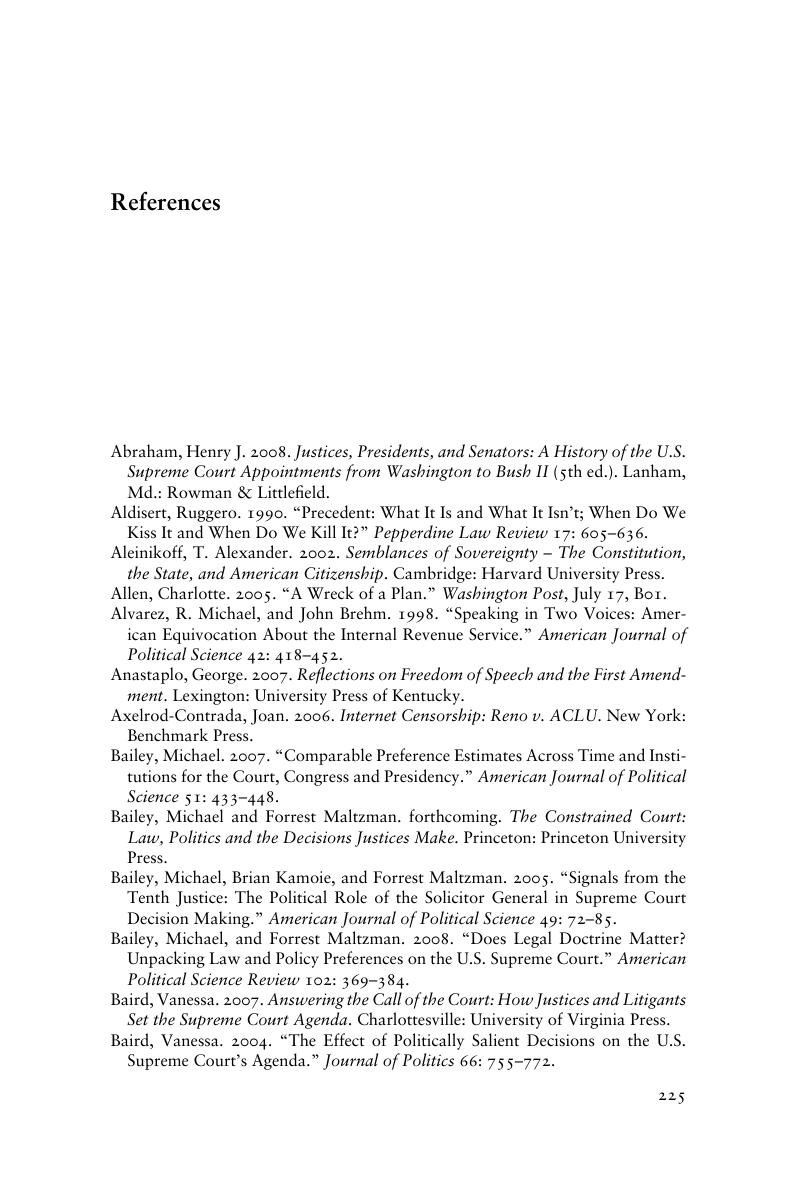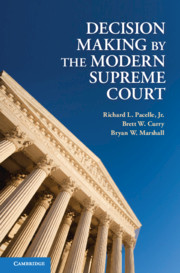Book contents
- Frontmatter
- Contents
- Acknowledgments
- 1 The Supreme Court
- 2 Heuristic Models of Judicial Decision Making
- 3 Building an Integrated Model of Decision Making
- 4 Decision Making on the Modern Supreme Court
- 5 Building a New Legacy
- 6 Sharing the Protection of Minorities
- 7 Avoiding Another Self-Inflicted Wound
- 8 Policing the Boundaries
- 9 Conclusion
- Measurement Appendix
- Cases Cited
- References
- Index
- References
References
Published online by Cambridge University Press: 05 June 2012
- Frontmatter
- Contents
- Acknowledgments
- 1 The Supreme Court
- 2 Heuristic Models of Judicial Decision Making
- 3 Building an Integrated Model of Decision Making
- 4 Decision Making on the Modern Supreme Court
- 5 Building a New Legacy
- 6 Sharing the Protection of Minorities
- 7 Avoiding Another Self-Inflicted Wound
- 8 Policing the Boundaries
- 9 Conclusion
- Measurement Appendix
- Cases Cited
- References
- Index
- References
Summary

- Type
- Chapter
- Information
- Decision Making by the Modern Supreme Court , pp. 225 - 250Publisher: Cambridge University PressPrint publication year: 2011



